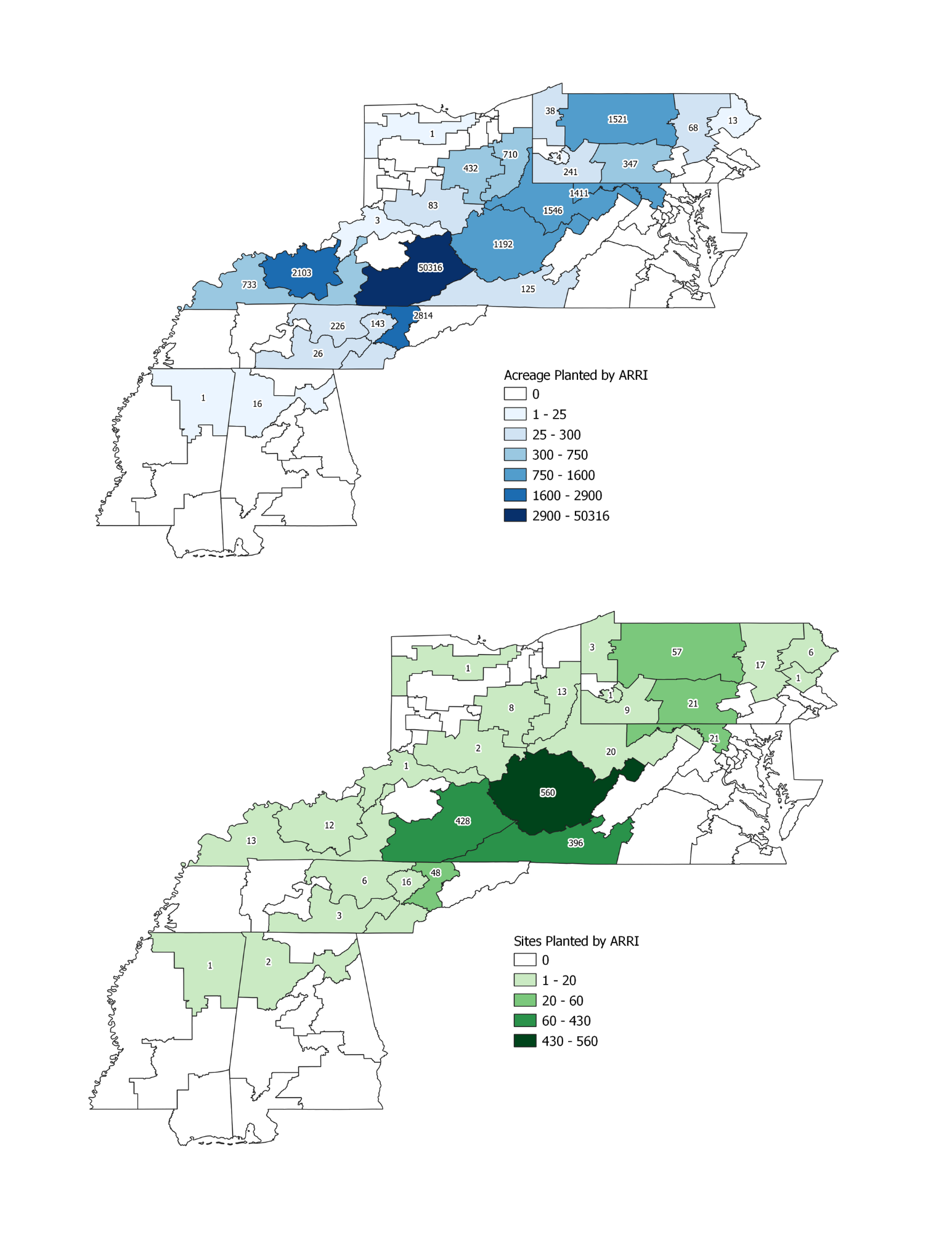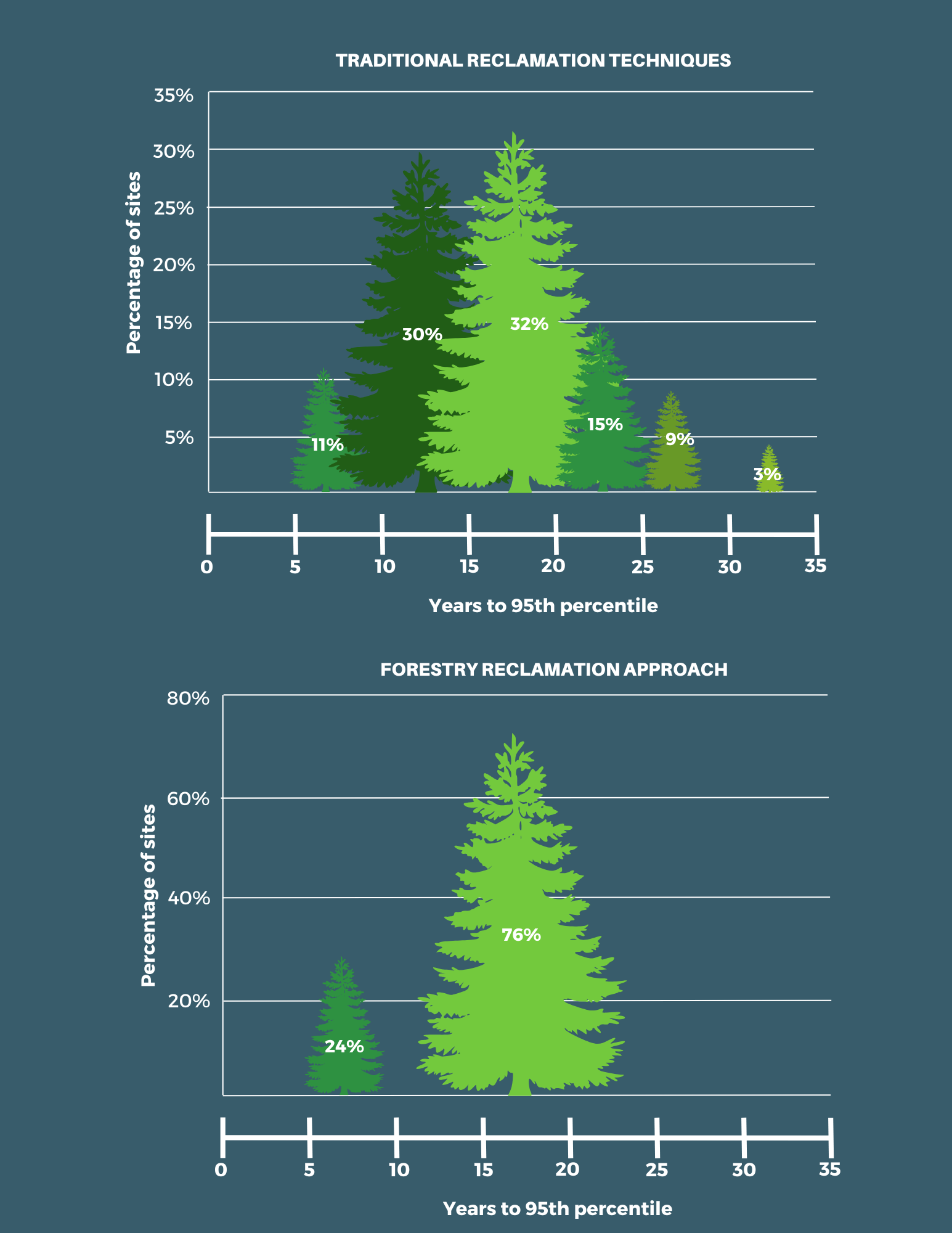
Impacts of Mining on Flooding Disasters
The Surface Mining Control and Reclamation Act requires all coal companies to reclaim surface and underground coal mine sites permitted after 1977. But conventional reclamation has repeatedly shown to be ineffective at returning mine lands to their original ecologic and hydrologic functionality, while operators only return the site to its “approximate original contour,” which oftentimes means compacting soil. Reclaimed soils are thinner, reducing the ability of the land to absorb and store water. Instead of native vegetation, mining companies often plant hardy conifers or grassland plants which do not slow the flow of excessive water. Two recent studies (Haneburg 2024, Swallom et al. 2025), for example, highlight the impact that surface mining has had on the July 2022 flooding in eastern Kentucky. Modeling suggests that this form of reclamation can result in an almost “impervious” surface to the ground acting similar to that of a city.
Investments in nature-based solutions for mine land reclamation are needed. This is where the Appalachian Regional Reforestation Initiative (ARRI) comes in.
ARRI is a partnership between the Office of Surface Mining Reclamation and Enforcement (OSMRE), state/local governments, academia, nonprofits, coal companies, and others to reclaim former and active mine lands through the Forestry Reclamation Approach (FRA). The FRA utilizes a five-step process to reclaim former and active mine sites:
1) Create a suitable rooting medium for good tree growth that is not less than 4 feet deep.
2) Loosely grade topsoil to create a non-compacted growth medium.
3) Use ground covers compatible with tree growth.
4) Plant two types of trees - early successional species to support wildlife and soil stability, and commercially-valuable crop trees.
5) Use proper tree planting techniques.
History of the Appalachian Regional Reforestation Initiative
ARRI began in 2003 with a Core Team of foresters, scientists, hydrologists, and others who laid the foundation for the initiative. From there, ARRI began to partner with seven initial states across coal-producing Appalachian states to adopt the Forestry Reclamation Approach (FRA) as the science-based approach to reclamation.
After working with local partners for years at the Flight 93 Memorial reforestation site, ARRI was awarded the Department of Interior’s Partners in Conservation Award in 2013.
By 2018, ARRI and Green Forests Work planted 400,000 seedlings across over 650 acres with the help of almost 2,000 volunteers.
Today, ARRI partners have successfully reforested over 65,000 acres and planted over 20 million trees in over two decades of work.
To learn more about some of ARRI’s projects in the region, read our report: Appalachian Regional Reforestation Initiative: Case Studies of Progress (2024).
ARRI’s Impact by State
The Appalachian Regional Reforestation Initiative has had significant impacts across the region. However, it has never received directed, federal appropriations.
To learn more about the state impacts of ARRI, the existing mine land reforestation needs by state, and why funding for this initiative has been difficult to come by, read our state-level reports below.
Forestry Reclamation Approach Impacts
A site is considered mostly reclaimed when it reaches the 95th percentile recovery threshold. According to a 2021 report from Appalachian Voices, 4E Analytics, Downstream Strategies, Green Forests Work, and SkyTruth, when comparing traditional reclamation techniques with that of the FRA, sites reclaimed using the FRA reached the “mostly reclaimed” threshold significantly quicker than those using traditional reclamation techniques.
Of the 14,943 non-FRA sites included in the 2021 study, 62% achieved “mostly reclaimed” status between 10-19 years, with 30% reaching it between 10-14 years and 32% between 15-19 years. The shortest time of recovery threshold was 5-9 years, which 11% of sites reached, and the remaining 27% took over 20 years to achieve.
Less data are available when comparing growth rates to non-FRA sites. However, at 195 surveilled FRA sites, all achieved “mostly reclaimed” status between 15-20 years, with roughly one-quarter of sites achieving this within 5-10 years, over double in traditionally reclaimed sites.



